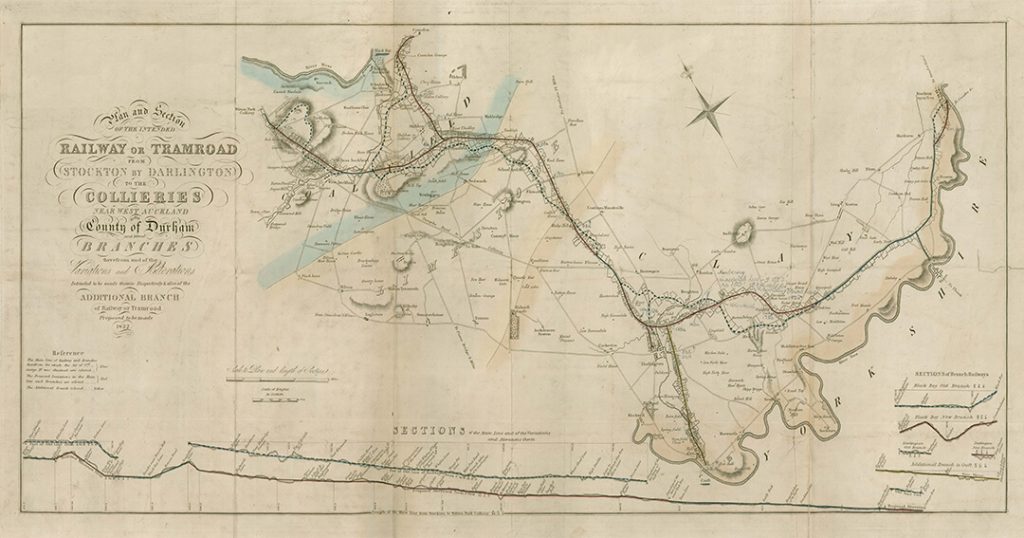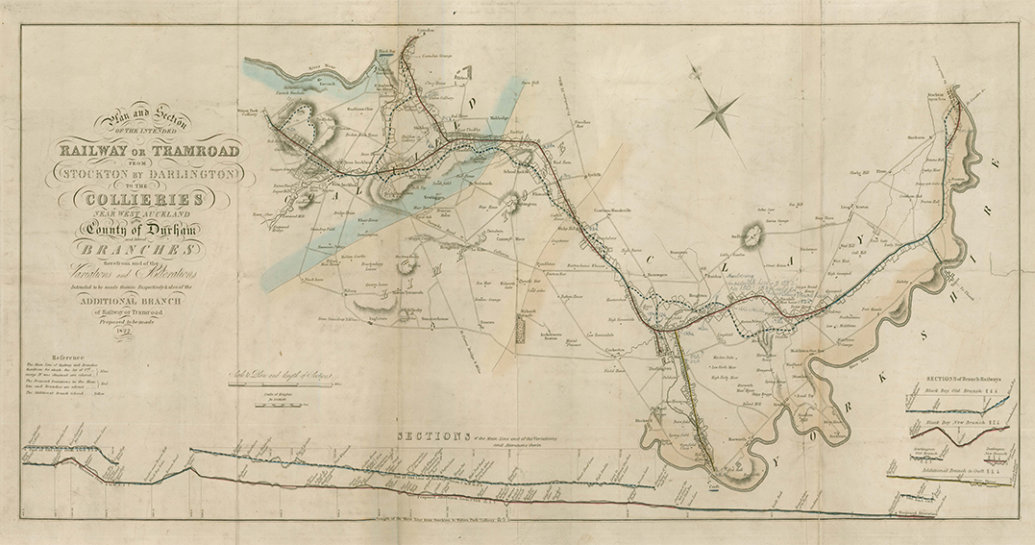Where can you find the origins of the modern railway? In County Durham, where The Architecture the Railways Built is heading in its new series.
County Durham is rich in railway heritage – so much that it dates back further than most of our Victorian railway, to the Georgian era. Join historian and presenter Tim Dunn in episode four on Yesterday at a wooded gorge near Stanley for striking views of the world’s oldest surviving single-span railway arch.
Tim says: “This modern structure demands no fanfare but its functional and simple looks are deceiving. Because this Grade I listed Georgian bridge is a triumph of industry over nature.”
The Causey Arch – over the Causey Burn – is considered the world’s first railway bridge. It’s an example of the Northumberland and Durham coalfield engineers’ early technological skills, according to Historic England, and has been listed since 1950.
Charity the National Transport Trust says on its website that the bridge was built between 1725 and 1726. It was the country’s longest single-span bridge at the time and held that record for 30 years.
But this bridge wasn’t used for anything resembling the modern railway. The National Transport Trust says that every day, more than 900 horse-drawn wagons crossed the arch using the Tanfield Railway. One track took coal to the nearby River Tyne while the other carried returning empty wagons.
This practice over the arch declined after 1739, when a fire destroyed Tanfield Colliery. Today, The nearby cliffs are a popular destination for climbers and the Tanfield Railway runs as a heritage railway, meaning it’s the world’s oldest working railway.
A new era – George Stephenson’s Stockton and Darlington Railway
So where did the modern passenger railway come from? The Stockton and Darlington Railway in County Durham is widely considered to be the first railway to use passenger locomotives. Its design came from ‘the father of the railways’, George Stephenson, who outlined his ground-breaking plans in a notebook that has become one of the world’s most historically important railway artefects.
Incredibly, we rediscovered it in 2018 after more than 50 years. The notebook, dated 1822, was found by John Page, a records assistant at our archive in York. It sets out Stephenson’s redesign of and budget for the Stockton and Darlington Railway, and became the blueprint for the railways that followed.

John uncovered the notebook, which had not been seen since the 1950s, while searching for documents in the archive’s deeds room. There are about 20,000 documents on the shelves; the Stephenson notebook is number 350.
He said: “Because it is a historical document it would never have been loaned out or requested as it didn’t impact the running of the railway so since the 1950s, it has sat on a shelf unnoticed amongst hundreds of other packets.
“I was looking for a deed for one of our internal colleagues and purely out of curiosity decided to look through the packets, and there it was, and what a thrill it was to find.”
The notebook shows Stephenson’s survey of fellow engineer George Overton’s original 1821 line and the amendments he recommended to it.
There were significant changes to the Overton design. Overton’s plan had sharp inclines, steep curves and tunnels whereas Stephenson favoured gradual inclines and eased curves. Stephenson also proposed the use of spoil excavated from the cuttings to create the embankments, avoiding the need for a tunnel Overton had recommended. This would shorten the Darlington branch by three miles.
Click here to find out more about the notebook.
Read more:
Incredible Stephenson railway history rediscovered
Read the George Stephenson notebook online
The Architecture the Railways Built – Royal Albert Bridge
The Architecture the Railways Built – Wemyss Bay
The Architecture the Railways Built: Severn Bridge Junction




